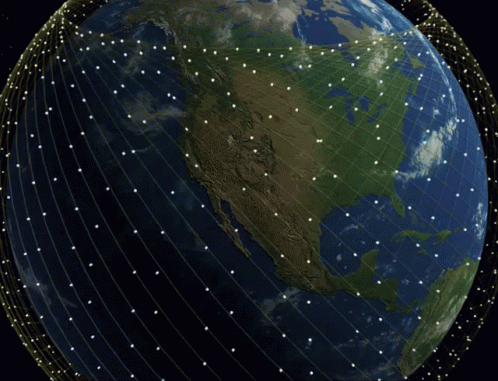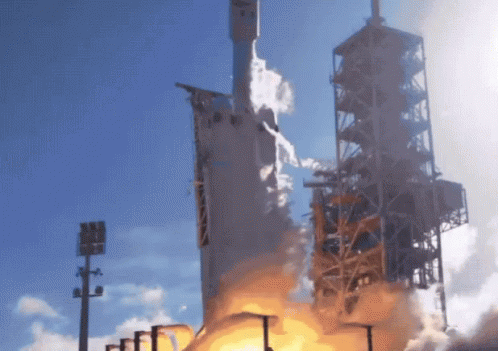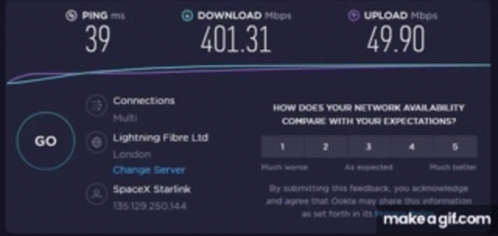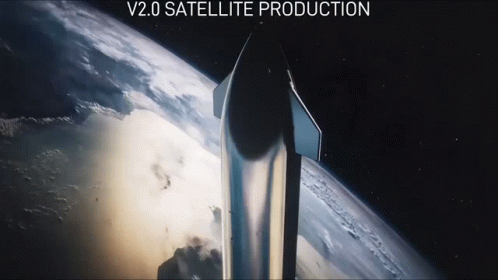Starlink (2-year review)

Hey friends, and welcome to my two-year long-term review of the Starlink internet service. In this video, we'll be taking an in-depth look at the service and discussing its features, pros and cons, and overall performance.
First, let's talk about what Starlink is and how it works. Starlink is a satellite internet service developed by SpaceX, a private space exploration company founded by entrepreneur Elon Musk. The service aims to provide high-speed internet access to users worldwide, even in areas where traditional internet infrastructure is limited or nonexistent.

To achieve this, Starlink relies on a constellation of low Earth orbit satellites positioned around the globe to provide coverage to most regions. These satellites are equipped with advanced technologies to deliver high-speed internet connections to users on the ground.

Let's go into some background on SpaceX - they're a private American aerospace manufacturer and space transportation services company founded in 2002 by Elon Musk. The company has gained fame for its successful and reusable Falcon 9 launch vehicles. It has also made strides in developing a super heavy-lift launch vehicle known as the Falcon Heavy. SpaceX has contracts with the US Government to supply the International Space Station and has developed and launched its own internet service provider called "Starlink".


Network connectivity in space is not new - the first commercially available internet-ready satellite service was launched (pardon the pun) in September 2003, but the performance was relatively poor and expensive. Ten years later, by 2013, you'd be lucky to get downstream data as fast as 12-15 Mbit/sec with latencies around 250ms.
The main features of the Starlink service are;
- High speeds (150-250Mbps down, 20-40Mbps up are typical)
- Reasonable cost (£/$ 75/month - no minimum contract)
- Generous usage allowances
- Low latency
Using StarLink couldn't be simpler; plug it in and show Dishy the sky, and that’s it! In under 5 minutes, we’ve gone from the forgotten digital abyss to having one of the fastest internet connections on the island.
In the early days, it was vital to have a clear view of the sky from horizon to horizon but as the Starlink constellation has expanded, a seamless view of the sky seems less critical.
Starlink service is low latency. Latency is the time it takes for a signal to travel from the user's device to the satellite and back. Low latency is essential for real-time applications like online gaming and video conferencing. Starlink can deliver latencies as low as 20 milliseconds, comparable to traditional fibre optic internet connections.
The current generation of Starlink V1 satellites can deliver download speeds of up to 350 megabits per second, with the potential for even higher speeds in the future. This is sufficient for most online activities, including streaming high-definition videos and downloading large files.

The next generation of Starlink (which are so large they do not fit inside the current Falcon 9 rockets and need the much larger "SpaceX Starship" to deploy them) have laser links. Light in a vacuum is faster than light in a fibre optic cable, meaning rapid worldwide communication and, importantly, low ping times for the first time worldwide. Gamers will love playing on international servers, and the stock markets that rely on undersea cables between London and New York will have a faster alternative to trade.
When recording this video on December 30th 2022, SpaceX launched 54 of the newly upgraded V2 satellites, which they hope will improve performance in the most congested parts of their network. They have also successfully flown Falcon 9 60 times in 2022 - landing and reusing rockets each time - which is impressive.

Another advantage of the Starlink service is its reliability. Because the satellites are positioned in low Earth orbit, they can provide consistent coverage even in remote or difficult-to-reach areas. This makes Starlink a good option for users in rural or remote locations who may not have access to other internet services. Starlink has been a decisive benefit to those in Ukraine who would be cut off otherwise. In May 2022, several hundred besieged Ukrainian military personnel and sheltering civilians in the Azovstal steel plant over 100 miles the wrong side of the front lines - despite running low on food and water - were still able to host a live stream Q&A thanks to Starlink.
Now let's talk about the pros and cons of the Starlink service. One of the biggest pros of Starlink is its ability to provide internet access in areas where other services may not be available. This is particularly useful for users in rural or remote areas, as well as for emergency responders and other organizations that need internet access in challenging environments.
Another advantage of Starlink is its low latency, which is vital for real-time applications like online gaming and video conferencing. This makes the service a good option for users who need fast, reliable connections for these activities.
One of the main cons of the Starlink service is its cost. I paid £439 ($499) for the dishy and £84 a month which has since dropped to £75 a month. If you wish to roam with your Starlink dishy, it will cost an additional $25 a month. The price is increasing for 2023 to $599 and $110 per month, apparently due to inflation.
Starlink (Residential)
$599 for the dishy, $110 per month
If you want to use Starlink on your boat or yacht - it's a $10,000 one-off fee for two marine dishy's and a whopping $5,000 a month. That's pocket change for some!

Maybe one day, I'll be on a diving liveaboard in tropical waters with Starlink internet service on tap.
Additionally, the service is only available in selected regions, but it is growing fast, and some users may need to wait for coverage to be expanded to their area. This can be frustrating for users who are eager to try the service but cannot do so because it is not yet available in their location or the satellite path overhead is obstructed.
Overall, the Starlink internet service has a lot of potential and offers some unique advantages, particularly for users in rural or remote areas. Its low latency and high speeds make it a good option for real-time applications, and its ability to provide internet access in challenging environments is a significant advantage. However, its cost and limited availability may be drawbacks for some users.
There is a considerable drawback to putting man-made objects into space - that of light pollution, which may affect (earth-based) astronomical observations. If you're interested in learning more about this please watch until the end :)
Take care!
-Mike
